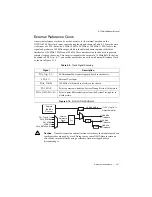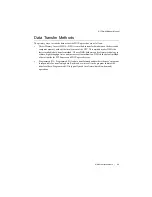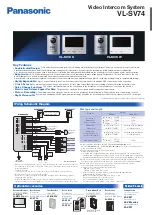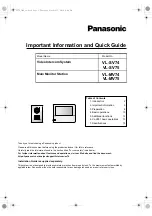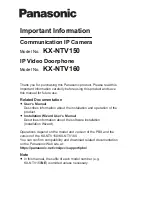
© National Instruments
|
3-1
3
SC Express Considerations
This chapter details the clock and trigger functionality available through the PXI Express
chassis. PXI clock and trigger signals are only available on NI PXI Express devices.
SC Express Clock and Trigger Signals
PXIe_CLK100
PXIe_CLK100 is a common low-skew 100 MHz reference clock for synchronization of multiple
modules in a PXI Express measurement or control system. The PXIe backplane is responsible
for generating PXIe_CLK100 independently to each peripheral slot in a PXI Express chassis.
For more information, refer to the
PXI Express Specification
at
www.pxisa.org
.
PXIe_SYNC100
PXIe_SYNC100 is a common, low-skew 10 MHz reference clock with a 10% duty cycle for
synchronization of multiple modules in a PXI Express measurement or control system. The PXI
Express backplane is responsible for generating PXIe_SYNC100 independently to each
peripheral slot in a PXI Express chassis. For more information, refer to the
PXI Express
Specification
at
www.pxisa.org
.
PXI_CLK10
PXI_CLK10 is a common low-skew 10 MHz reference clock for synchronization of multiple
modules in a PXI measurement or control system. The PXI backplane is responsible for
generating PXI_CLK10 independently to each peripheral slot in a PXI chassis.
Note
PXI_CLK10 cannot be used as a reference clock for SC Express modules.
PXI Triggers
A PXI chassis provides eight bused trigger lines to each module in a system. Triggers may be
passed from one module to another, allowing precisely timed responses to asynchronous
external events that are being monitored or controlled. Triggers can be used to synchronize the
operation of several different PXI peripheral modules.
On SC Express modules, the eight PXI trigger signals are synonymous with PXI_Trig <0..7>.
Note that in a PXI chassis with more than eight slots, the PXI trigger lines may be divided into
multiple independent buses. Refer to the documentation for your chassis for details.








